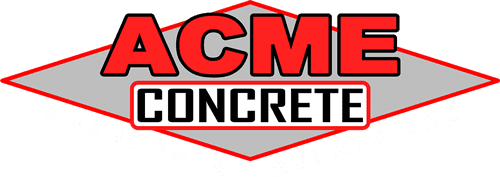Concrete surfaces — whether driveways, sidewalks, or patios — don’t last forever. Over time, shifting soil, erosion, and freeze-thaw cycles can cause slabs to sink or become uneven. When this happens, property owners often face one big decision: raise the existing concrete or replace it entirely.
This guide explains the pros, cons, and costs of each option, so you can make an informed decision.
What Is Concrete Raising?
Concrete raising (also called slab lifting or concrete leveling) is a repair process where your existing concrete is lifted back to its original position using injected material beneath the slab.
We specialize in polyurethane foam concrete raising, a high-performance, environmentally safe repair method. Certified technicians drill small holes, inject expanding foam beneath the slab, and carefully raise it back into place.
Benefits of Concrete Raising:
Cost savings – Typically 50% less than replacement in our service area.
Fast turnaround – Most jobs take a few hours, with areas ready to use the same day.
Minimal disruption – No large demolition equipment, noise, or hauling away debris.
Eco-friendly – Keeps concrete out of landfills.
Raising Concrete That Already Has Cracks
Many property owners worry that cracked concrete can’t be saved but that’s not always true. If the slab is structurally sound and the cracks are not severe, we can lift the concrete and then seal the cracks to extend its lifespan.
After raising the slab, our team applies a high-quality silicone-based sealant (caulk) to fill and seal visible cracks. This step is crucial because:
It keeps water out of the slab and underlying soil.
It reduces freeze-thaw damage during colder months.
It prevents further erosion that could lead to future settling.
In many cases, raising and sealing is significantly more cost-effective than full replacement, while still restoring function and preventing additional damage.
What Is Concrete Replacement?
Concrete replacement involves breaking up and removing the existing slab, then pouring an entirely new one. While this creates a brand-new surface, it’s typically more expensive, time-consuming, and disruptive.
Replacement is best when:
The concrete is badly cracked or structurally unsound.
More than one-third of the slab’s surface is severely deteriorated.
The cost of raising approaches or exceeds replacement pricing.
Concrete Raising vs. Replacement: Cost Comparison
Factor | Polyurethane Concrete Raising | Full Concrete Replacement |
|---|---|---|
Average Cost | ~50% of replacement cost | Highest cost option |
Project Time | Hours | Several days to weeks |
Lifespan | 10-10+ years with proper maintenance | 20-60 years |
Disruption | Minimal | Significant (demolition, curing) |
Environmental Impact | Low (reuses slab) | Higher (waste + new cement) |
Note: If we think our polyurethane raising estimate is more than 50% of replacement, we’ll recommend getting quotes for a new pour. It’s the most cost-effective decision long-term.
Warranty Comparison: Polyurethane vs. Replacement
One of the biggest differences between polyurethane raising and full replacement is the warranty.
Polyurethane Raising Warranty: We offer a 10-year warranty on all polyurethane concrete raising projects. This gives you long-term peace of mind that your investment is protected.
Concrete Replacement Warranty: In many cases, new concrete only comes with a 1-year warranty. After that period, you’re responsible for any settling, cracking, or other issues, even if they occur early in the slab’s life.
With polyurethane raising, you’re not only paying less upfront, but you’re also getting far better warranty coverage for the years ahead.
Why We Recommend Polyurethane Raising First
In most cases, polyurethane raising is the best choice for homeowners and commercial property owners alike. It’s faster, cleaner, and more affordable, while still providing a long-lasting solution.
We are a FoamJection-certified company, meaning every project meets strict industry standards for durability and precision. We always provide honest recommendations, if replacement is the smarter choice, we’ll say so.
FAQ: Concrete Raising vs. Replacement
-
How long does polyurethane concrete raising last?
Polyurethane foam raising can last 10–20 years or more with proper drainage and soil stability. -
When should concrete be replaced instead of raised?
Replacement is best when slabs are badly cracked, crumbling, or the cost of raising exceeds 50% of replacement. -
Can you raise concrete that already has cracks?
Yes. If the slab is structurally sound, we can lift it and seal the cracks with silicone-based caulk to keep water out and prevent further damage. -
How soon can I use my concrete after raising?
With polyurethane foam, most surfaces are ready for use within hours, often the same day. -
Is polyurethane foam safe for the environment?
Yes. Polyurethane is eco-friendly, inert, and does not leach into soil or groundwater. -
How do polyurethane and replacement warranties compare?
We offer a 10-year warranty on polyurethane raising, while most new concrete pours only come with a 1-year warranty.
